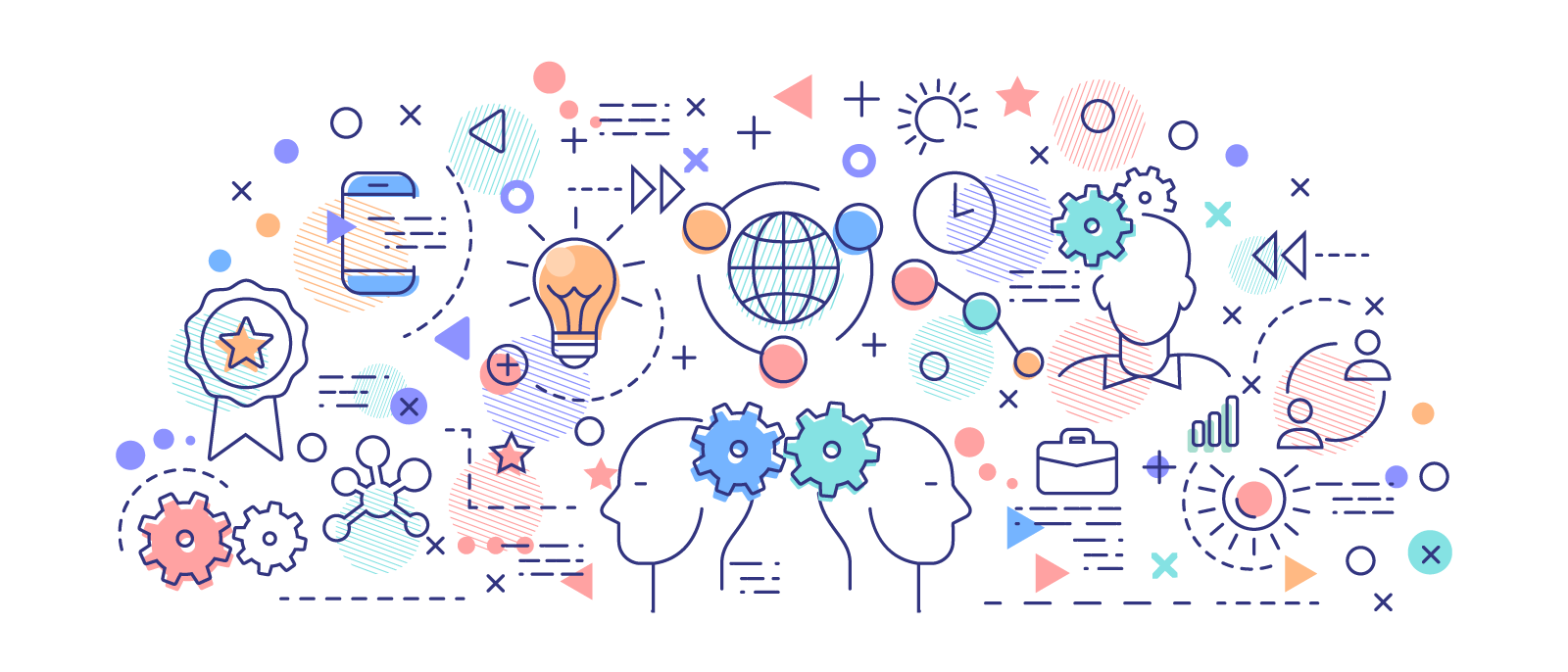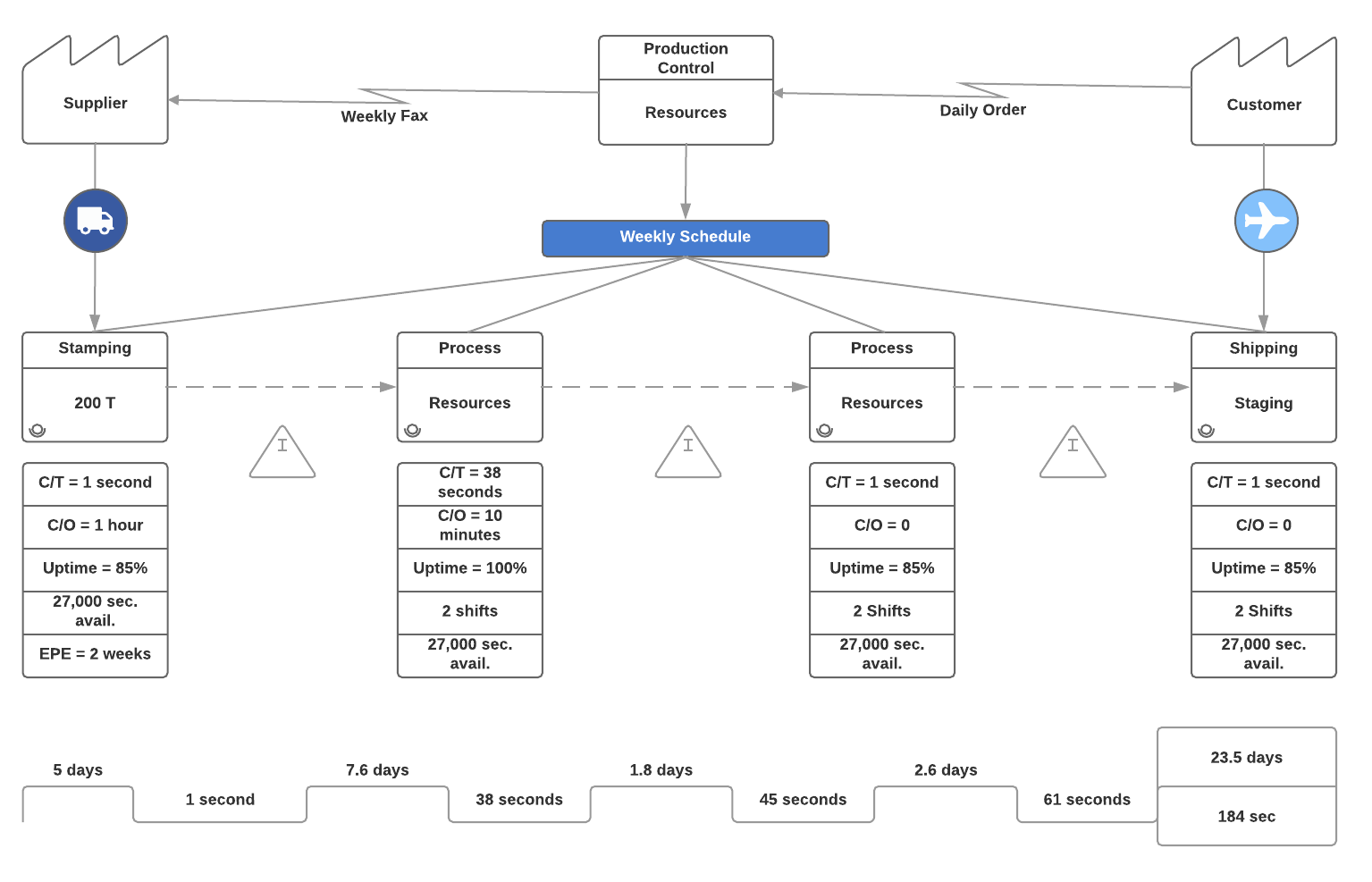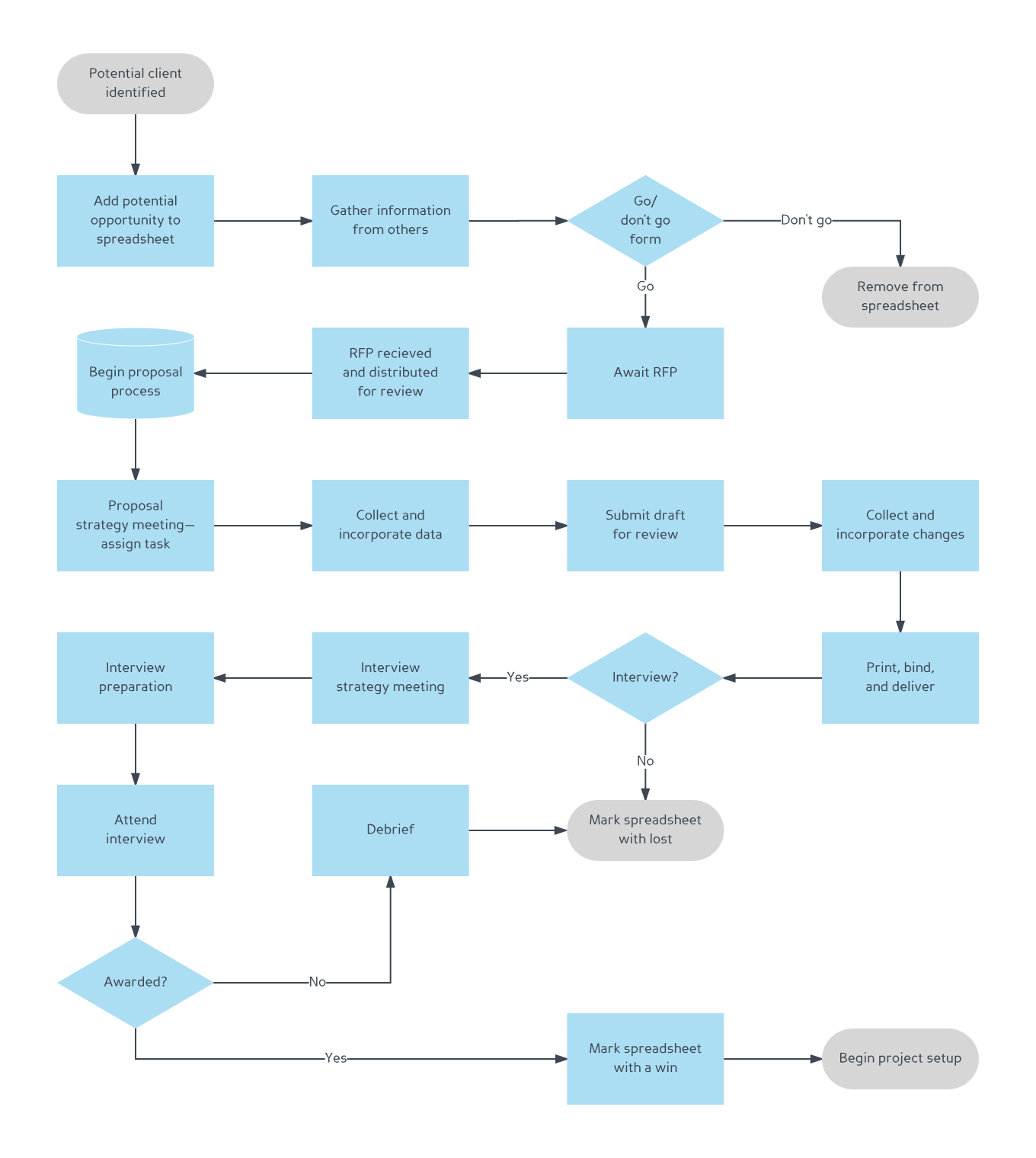
How to Use Kaizen Methodology to Improve Business Processes
Lucid Content
Reading time: about 6 min
What does process improvement look like in your organization? Chances are you don’t have a single solution for all business process hurdles. Even after month-long projects are implemented and big budgets are spent, no system is perfect—and while an initiative may temporarily improve the way work is done, chances are that you’ll need to change it again at some point.
You don’t have to overcomplicate or silo growth and business process improvements (BPI). Using the Kaizen method of continuous improvement encourages organizations to play the long game—the slow and steady.
And the best part? Anyone from a project manager to a CEO can implement it.
What is Kaizen, exactly?
Kaizen is a Japanese word which translates to mean “continuous improvement.” It's a “do better every day, with everyone, and everywhere” philosophy. The focus is on small, frequent improvements to existing work processes, generated by all employees at all levels in an organization—not just managers and executives. When applied, it can improve every function of a business, from marketing to finance to the warehouse.
The Kaizen philosophy challenges the statement of “that’s just the way we do things.” Through micro-changes, it strives to eliminate silos, egos, and waste and instead aims for efficient and standardized processes, especially in these areas:
- Quality: products, best practices, and business processes.
- Cost: materials, energy, and resources.
- Delivery: delivery time and non-value added activities
- Management: training, attitudes, flow, and documentation
- Safety: working conditions
You might have heard the term Kaizen in reference to The Toyota Way—a famous tale studied in business school. Or, maybe you've heard it tossed around with other continuous improvement methodologies like Six Sigma, Lean, Total Quality Management, 5S, and the like. Kaizen methodology is more mindset than toolbox, so it actually can (and probably should) be implemented alongside other BPI methodologies like Six Sigma and 5S. But why implement it at all?
Why implement the Kaizen method?
Over time, small incremental improvements can deliver significant results—it’s basically a grassroots movement for BPI.
Kaizen also fosters conditions in which employees are deeply engaged. When implemented successfully and clearly, Kaizen fulfills three essential needs of employees:
- Connection: Feeling connected to a bigger organizational goal, to their work, and to their co-workers
- Creation: Opportunities to think and solve existing problems with creative, yet practical solutions
- Control: A sense of ownership and awareness throughout the process
Using the Kaizen methodology is an easy way to engage employees and develop a culture of continuous improvement. It seems obvious, but employee engagement has a direct impact on business processes and success. When you organize and empower all employees to participate in the big picture through small effects to their local environments, they'll stick around longer and work smarter.
You can easily loop in employees with Lucidchart, simply by sharing your process diagrams and collaborating in real time with the chat feature or even by directly commenting on specific parts of your document.
How to put Kaizen into practice
Kaizen can be implemented company-wide, within teams, or even personally. Some cases may require clear direction from leadership and company culture shift.
Use the idea of Kaizen continuous improvement to build process and deployment flowcharts to visualize your current processes and more easily detect where waste might be hiding in your company. Something as simple as taking a step toward visually documenting your business processes with a Kaizen diagram could be an improvement that could lead to further valuable realizations and changes.
For example, you could use a value stream map to detect waste and non-value added time in manufacturing or even in a DevOps environment.

Here are seven helpful tips to get started and keep going with the Kaizen methodology.
Question current practices
If you want to grow and improve your business, you must reflect on what you do now. Challenging as-is processes can be touchy sometimes, but being critical of your own processes is necessary to make impactful, lasting changes.
Think small
Most people in an organization are not C-suite or powerful decision makers. Empower everyone, even individuals and small teams to make changes in their own processes. While big ideas are great, even small ideas can have big impacts long-term, such as consolidating meetings, a decision that frees up time to get more work done.
Encourage participation in a blameless environment
Create an environment where employees aren’t afraid to speak up when they recognize a point of weakness or think there’s a better way to do something. But, at the same time, if an idea doesn’t work out the way they envisioned, the Kaizen method would suggest you iterate and improve rather than point fingers. Innovation, after all, is just a fancy word for trial and error.
Don’t seek perfection
Kaizen methodology doesn’t exist to suddenly perfect systems or processes, but to simply improve them. One might even argue Kaizen suggest perfection is unattainable—that regardless of how well things are going, there are always ways to improve, from product features to the way you manage projects.
Recognize success
Celebrate your improvement victories, however big or small, even if it’s just a Slack shoutout or high five. If you have employees who genuinely want to help improve your business, product, or customer experience, then those are the types of employees who are invested, and you want to keep those people around.
Use 5S and other strategies
Kaizen process improvement is a mindset to always be on the lookout for ways to improve. But, when the time comes to implement improvements, you may find it useful to take advantage of other process improvement methodologies like Six Sigma or 5s, which can act as a framework for data-driven decision making.
Choose a Lucidchart template to fit your project needs
When you know your processes, it’s easier to detect where there’s room for refinement, elimination, or collaboration. The Lucidchart template library can help you get started, whether your needs are visualizing business and sales processes or network diagrams.

When it comes to putting your ideas into action, utilize Kaizen events: slight and structured improvements, where process owners and teams quickly determine the intensity, immediacy, and importance of each improvement project. Events essentially ensure improvements are SMART (specific, measurable, attainable, relevant, and timely).
Potential solutions should be strategically implemented and monitored through a Plan, Do, Check, and Act (PDCA) cycle.
The PDCA is a continuous cycle and framework that can help improve any process or product by breaking it into smaller steps.
You can use a Kaizen diagram to visualize and do the following:
- Plan: identify the issue or opportunity for improvement and develop a hypothesis
- Do: test your solution on a small scale
- Check/study: measure and evaluate the results for effectiveness
- Act: if successful, implement the solution. You may need to refine, retest, or start a new cycle.
From start to end, Lucidchart can provide project managers with a visual map to monitor goals and expectations while guiding teams through each stage of PDCA. It's a project manager's best friend—a visual process and intuitive diagramming tool that keeps teams on track, clarifies roles, and ensures teams remain invested and in the know.
Lucidchart is a one-stop-shop. You can link and build all your documentation in one place, with real-time updates and instant access to documents so you can get the most out of Kaizen while putting great ideas into practice.
Know your processAbout Lucidchart
Lucidchart, a cloud-based intelligent diagramming application, is a core component of Lucid Software's Visual Collaboration Suite. This intuitive, cloud-based solution empowers teams to collaborate in real-time to build flowcharts, mockups, UML diagrams, customer journey maps, and more. Lucidchart propels teams forward to build the future faster. Lucid is proud to serve top businesses around the world, including customers such as Google, GE, and NBC Universal, and 99% of the Fortune 500. Lucid partners with industry leaders, including Google, Atlassian, and Microsoft. Since its founding, Lucid has received numerous awards for its products, business, and workplace culture. For more information, visit lucidchart.com.
Related articles
Six Sigma process mapping: Why it matters and how to get started
Learn everything you need to know about Six Sigma process mapping, including benefits, step-by-step instructions, and different types of process maps you can use.
Which process improvement methodology should you use?
Struggling to decide which process improvement methodology to use? Learn about the top approaches—Six Sigma, Lean, TQM, Just-in-time, and others—and the diagrams that can help you implement these techniques starting today.
